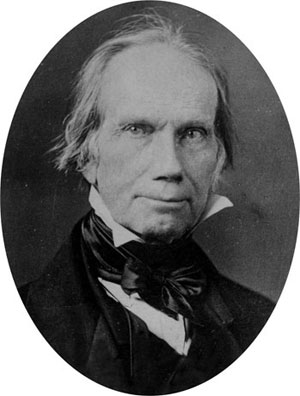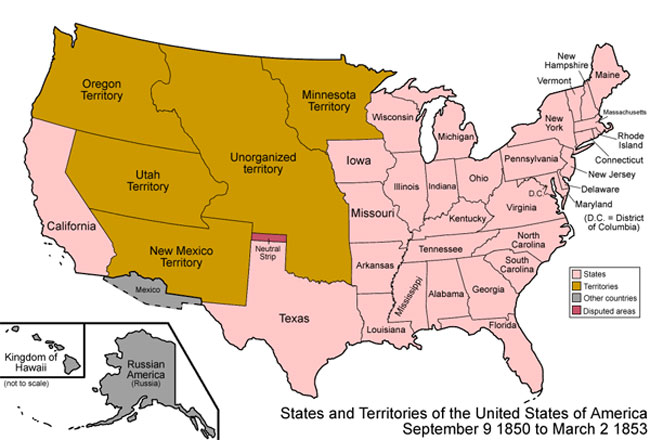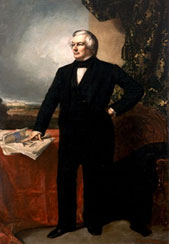

The previous two sections revealed the basic tensions between the North and South. The two sides differed politically, economically, and most importantly, socially, over slavery. They also had contrasting views of states' rights.
However, up until 1861, the country had always managed to find a compromise to contain these differences. Strengthened by successes including the American Revolution and the War of 1812 as well as ideas like Manifest Destiny, a spirit of nationalism limited the tension of conflicts over slavery. In the 1850s, all that ended. A series of events "dialed up the heat" on the slavery issue and caused the country to explode.
Ironically, the first major step towards Civil War was the last major act of the old generation that always found a deal to contain sectional differences—the Compromise of 1850.

Portrait of Henry Clay, "The Great Compromiser." Many people thought if he had lived until 1861, he would have found a way to avoid war.
After the conclusion of the U.S.- Mexican War, the country had to determine what to do with the large amount of land won from Mexico and whether it would be slave or free. California was already to join the Union and it wanted to be one, giant free state. Northern Whigs, which controlled the Senate, wanted the whole Mexican Cession to be free. Slavery had already been abolished in Mexico for over 30 years.
Southerners wanted, at a minimum, the Missouri Compromise line of 36'30° extended to the Pacific Ocean. California should be divided into two states, one slave and one free, and slavery permitted in the new territories of Utah and New Mexico.
Complicating matters, Texas had a series of land disputes with New Mexico and was threatening to secede if they were not resolved.
An aging , the Great Compromiser from 1820 and 1832, passed one last compromise shortly before he died. Here were the terms:
The deal created a map of the U.S. that looked as follows:

In a compromise, each side has to give a little to get a little. Organize the terms of the Compromise of 1850 into the aspects of the deal that each side received, or indicate that the term was neutral—it didn't benefit the South or the North..
→ Reflect: Who got the better of the Compromise of 1850? Answer in your notes.
The Compromise of 1850 did not prevent the Civil War, but it did keep the peace for a decade. This peace would prove more crucial for the North. Its economic advantages became significantly stronger during the 1850s.
The most controversial aspect of the Compromise of 1850 was the Fugitive Slave Law. It would really spur into action the people who opposed slavery; the abolitionists. It is to them that we turn next.

For Compromise, A Timely Death
Passing the Compromise of 1850 was a legislative masterwork by Clay and the new rising star of the Senate, Stephen Douglas of Illinois. It almost was undone when abolitionist Whigs convinced President Zachary Taylor, the hero of the Mexican American War, that any deal which could allow slavery to expand and included a Fugitive Slave law was morally wrong.
Taylor was preparing to veto the series of bills containing the compromise. However, Taylor suddenly died in office. His Vice President, Millard Fillmore, did not have any such moral objections. He did the one thing as president that he is known for, signing the Compromise of 1850 into law.
Sources of images used for this section as they appear, top to bottom: